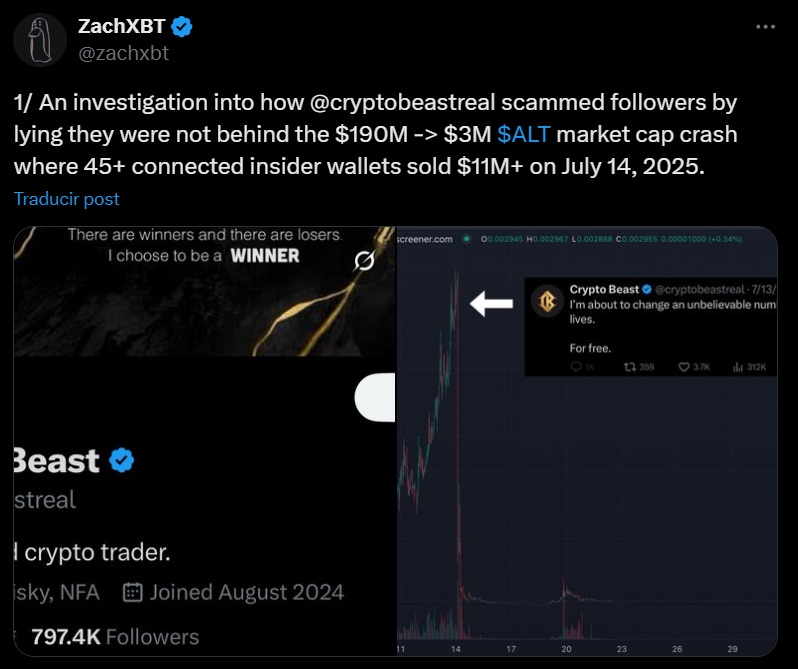TL;DR
- ZachXBT identified Crypto Beast as responsible for a scam that caused the ALT token to crash after massive sales from 45 wallets.
- Between 9 and 10 AM on July 14, 2025, ALT’s price plummeted 97%, from $0.19 to $0.003, and its market cap dropped from $190 million to $3 million.
- Crypto Beast actively promoted ALT on social media before the crash, denied involvement, and deleted his account following the report.
Blockchain security investigator ZachXBT exposed Crypto Beast, a crypto influencer, as the mastermind behind a scheme that led to the near-total collapse of the ALT token.
What Happened?
According to the investigation, over 45 wallets linked to this individual sold tokens worth more than $11 million, causing ALT’s price to fall 97% within hours. The crash took place between 9 and 10 AM on July 14, 2025, when the price dropped from $0.19 to just $0.003, and the market capitalization fell from $190 million to $3 million.
Before the crash, Crypto Beast actively promoted the token on social media, encouraging thousands of investors to buy. However, he denied any involvement in the collapse and published an analysis attempting to distance himself from the scheme. After ZachXBT’s report was released, the influencer deleted his account and removed all promotional messages related to ALT.
The investigation traced a public wallet belonging to Crypto Beast that funded multiple “sniper wallets.” These accounts quickly accumulated a large share of ALT’s supply and then began massive sell-offs, triggering the sharp price drop. Funds moved through exchanges like KuCoin, Binance, HTX, and Sideshift to distribute capital discreetly and avoid detection.
ZachXBT Reveals Crypto Beast’s Modus Operandi
ZachXBT also identified Crypto Beast’s involvement with other tokens following similar patterns, creating hype only to quickly sell and leave followers with losses. Among these tokens are ALPHA, RICH, YE, RUG, ACE, and JOHN, all linked to alleged fraudulent pump-and-dump operations.
The investigation highlights a recurring pattern: the influencer inflates expectations, promotes the token, then sells off his holdings, causing steep price declines and losses for retail investors. This case underscores the importance of carefully evaluating influencer recommendations on social media before investing in cryptocurrencies or any other assets













